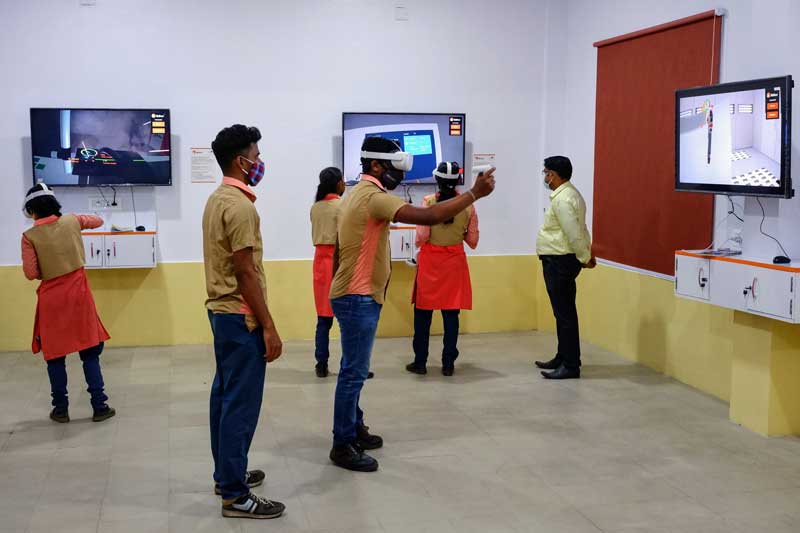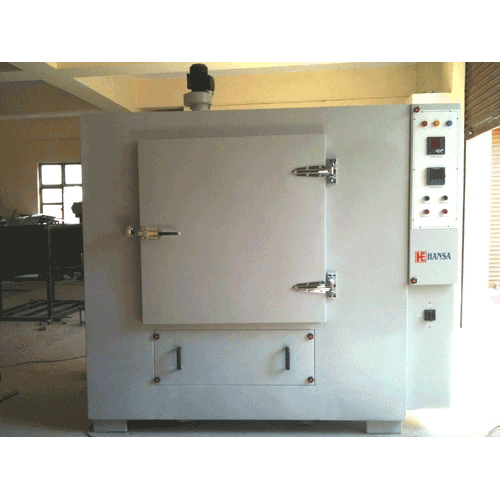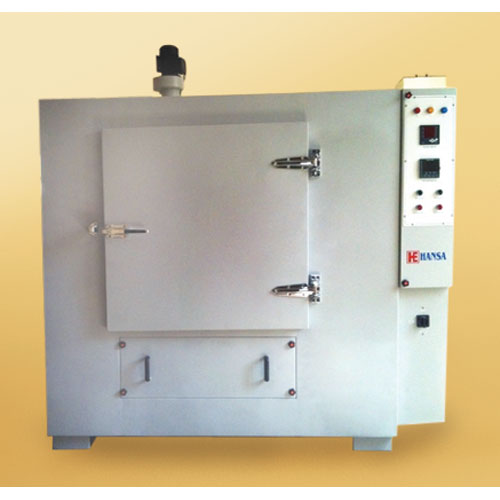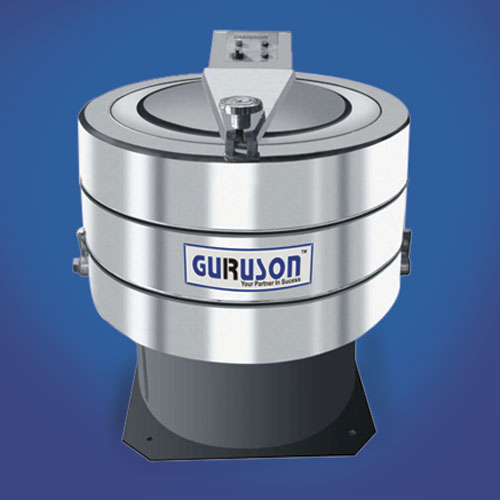Schedule a Call Back
Harness VR & Metaverse to skill India for smart manufacturing
 Industry News
Industry News- Nov 01,22

The smart manufacturing revolution is upon us, with most factories switching to IoT, big data analytics and smart machines for increasing the efficiency of their operations. While a lot of attention is given to technology, it is important that the humans operating these smart machines — as well as the machines that have not been converted into smart ones — will need to have the right skills so that they don’t become the weakest link.
Indian manufacturing has come a long way, from adopting an import-substitution approach to building world-class products. National Manufacturing Policy, Make-in-India push and the recent Production-Linked Incentive (PLI) schemes from the government side are steps that will further improve the overall situation. With close to 70 per cent of our population in the productive age group, India has a great opportunity that is not available to the developed Western world, which has an aging demographic. To reap its benefits, we need to have the right skills within our workforce for competing with the best in the world.
The recognition of the need to accelerate the skill development activities resulted in the creation of the National Skill Development Corporation, and later in the establishment of our Skill Development Ministry.
While a lot of progress has been made, the gap between what is needed and what is currently being achieved on a yearly basis is widening, and conventional brick-and-mortar approach alone is not scalable to the extent required. Hence it is essential that technology-based solutions complementing brick-and-mortar training centres work together to bridge the gap.
Gaps in industrial, vocational training
Over the last few years, the syllabus for most trades that are taught at Industrial Training Institutes (ITIs) have been revised to meet current industry requirements. However, the practical labs at most ITIs are still archaic, and this gap is affecting the quality of training.
Most industries end up doing in-house training after hiring from ITIs for one year or more, before the hires become productive. It is this area where India falls behind, with 4 per cent of its productive population being trained in vocational skills, compared to advanced economies like Germany (75 per cent vocationally trained) and South Korea (96 per cent vocationally trained)
ITIs' selection system is also fraught with problems. High-School marks are currently used as admission criteria, with no regard for students’ dexterity aptitude. This is another area in which technology can make a difference.
The selection system as well as training delivery and assessment are areas that technologies like Metaverse and Virtual Reality can make a huge impact, especially in skills that require extensive practice that is costly to deliver or near impossible to accurately measure in the real world.
Informal sector worker output vs formal sector
The output of the formal worker in the formal sector is 20 times that of informal worker in informal sector. The quality-of-work output expected in Smart Factories is much higher than conventional ones. At the same time, working-environment quality too has improved manifold. Therefore, upskilling the unskilled and semi-skilled workforce to have the right skills to be in the formal sector is a win-win approach.
Where do VR, AR, & XR fit in?
We are seeing a lot of hype around these terms, with a lot of overpromising being done. It is important to understand where these technologies can be applied, and identify the right use cases where they will provide maximum returns, rather than implementation for technology’s sake. Let us break it down into the basics, specifically in the context of manufacturing.
Augmented Reality (AR) is when a picture or video of the real world (as seen through a camera) is enhanced with additional information on a 2D display. This has a lot of applications in remote maintenance and troubleshooting in manufacturing.
You could put a mobile or tablet loaded with an AR app in front of a machine, and the app will identify the parts and guide you through the steps needed for maintenance or repair. The limitation is that since you see everything on a 2D screen, and therefore not feeling immersed, it is not very effective for training on dexterity skills, or in applications where judgement of depth/distance is needed.
Virtual Reality (VR) is when you are immersed into a computer generated or “virtual” world in 3D, and you can interact in a very natural manner with what you see. This is achieved by shutting out the real world by wearing a headset which has a display for each eye, and headphones to deliver surround sound.
This has a lot of applications for training, and is highly effective as it gives the complete feeling of “learning by doing”. VR applications are particularly effective when it’s costly to train using actual equipment, or situational-training is difficult or impossible to implement, or in-training mistakes can prove costly or dangerous.
For example, operating a very costly crane incorrectly can result in component damage. The limitation is that while VR is very effective for dexterity training, it is not that useful for real-time maintenance guidance, in which AR fares better.
Extended Reality (XR) is an umbrella term for a combination of VR and AR. You can build tools that selectively bring real-world objects into the virtual world. If designed well, such software and hardware systems can be highly effective for both training and guided-maintenance activities on shop floors. XR technology is still evolving, since most devices are closer to either VR or AR.
We are yet to see a device that can switch perfectly between AR and VR modes, but this is changing as we speak. A Mixed Reality (MR) device, like Microsoft HoloLens, is closer to AR (it works through display goggles that can change transparency, and therefore become VR by increasing display opaqueness of the display).
On the other hand, VR devices like Oculus (Meta) Quest and HTC Vive Focus are adding AR capabilities by providing a “passthrough” view of the real world through their cameras without the need for taking off the headset. The passthrough view is usually monochrome, and you lose the perception of depth/distance in this mode. These technologies are constantly improving, and soon we will have devices that can switch easily and effectively between AR and VR.
Indian industry needs a realistic Metaverse approach
Metaverse is now a commonplace term, but no one seems to be able to define what it exactly is. The broad consensus is that it is a collection of VR platforms on which people can interact and collaborate in an immersive manner. Technologies like Web3, Blockchain, 5G, etc contribute to the Metaverse.
One way to understand what the Metaverse can do for Smart Manufacturing is to ignore these fancy terms, and treat it like XR along with these capability extensions:
1) Multiple people can simultaneously operate on it
2) More geographically-dispersed working together through 5G enabling
3) Authentications handled by Blockchain and similar technologies, enhancing safety.
For example, an expert sitting at a factory in Chennai wearing an XR/MR headset can guide/train a technician wearing a similar headset sitting at a factory in Durgapur, be it for dexterity skills or for other shop-floor operations. The one-time cost of hardware and software will most often result in payback in less than two years.
What lies ahead
Technology has a huge impact on skill training and shop-floor operations. But it is important to not get caught up in jargons. Rather, a clinical understanding of smart manufacturing use-cases of Metaverse and XR is the best way forward, be it for business or for operational goals.
About the author:
Sabarinath C Nair is the CEO & Co-founder of Skillveri - a Metaverse XR technology company headquartered in Chennai. Sabarinath is also a member on the Prime Minister's Champions of Change Panel for Edtech and Skilling. After starting-up at IIT Madras, Skillveri has become a world leader in the Metaverse XR multi-skill simulation space, and has won many awards, including the NSDC’s National Innovations for Skills Challenge, which comes under the purview of the Ministry of Skill Development.
Related Stories

3D Printing Strengthens the Foundations of Smart Manufacturing
The global 3D printing market was estimated at $30.55 billion in 2025 and is projected to reach $168.93 billion by 2033, growing at a compound annual growth rate of 23.9 per cent from 2026 to 2033.
Read more
India’s Top 100 Engineering Companies 2025 by Smart Manufacturing & Enterprises
FY25 unfolded against a challenging external setting. Despite the global headwinds, India posted real GDP growth of 6.5 per cent in FY2024–25. In this edition, Smart Manufacturing & Enterprises (S..
Read more
How AI is transforming smart manufacturing and unlocking new industrial efficiency
Balaji Krishnamoorthy, Executive Vice President, Findability Sciences, outlines how AI is reshaping smart manufacturing, boosting efficiency, enabling predictive insights, and driving faster, data-l..
Read moreRelated Products

Heavy Industrial Ovens
Hansa Enterprises offers a wide range of heavy industrial ovens.

High Quality Industrial Ovens
Hansa Enterprises offers a wide range of high quality industrial ovens. Read more

Hydro Extractor
Guruson International offers a wide range of cone hydro extractor. Read more














